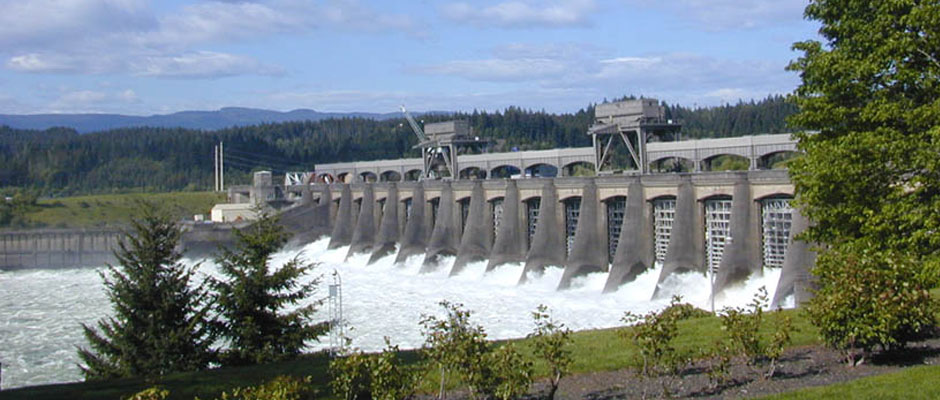September 2010
Industry First in Video Analytics
Cascade Locks, OR – US Army Corps of Engineers, Portland District – Bonneville dam
ISS provides preventative maintenance inspections, upgrades and designs/installs new security components to portland district infrastructures.
The US Army Corps of Engineers–Portland District, encompasses close to 97,000 square miles of land and water in Oregon and southwestern Washington. The role of The Portland District is to balance the region’s competing needs for navigation, flood damage reduction, hydropower, fish and wildlife habitat, disaster recovery, irrigation and recreation. The Portland District operates navigation locks on the 465-mile-long Columbia-Snake Inland Waterway and maintains over 720 miles of federal navigation channels and harbors. More than 30 million tons of cargo pass through District ports and locks each year1. Additionally, The Portland District produces 60 percent of the region’s hydropower, supporting the needs of public and private utilities, cities and industry. The Salmon and Steelhead industry from the Columbia River Gorge is estimated to conribute nearly $200 million in personal income for the year 20102.
The biggest challenge The Portland District faces may be that of helping fish pass through the dams safely. Since the 1950s, the Corps has spent more than $70 million researching ways to protect anadromous (migratory) fish in the Columbia-Snake River system. The District has built and funds eight fish hatcheries. The dynamic and varied projects of The Portland District and similar systems, illustrate the critical nature of waterway infrastructures. The Columbia River provides a great economic resource in the fishing industry, the generation and sale of power, the recreation industries, navigation systems to transport cargo, and provides water to communities and agriculture.
Bonneville Dam, authorized by Congress in 1933, covers the dangerous Cascade Rapids, provides fish ladders to protect the region’s fish, and generates electricity for local homes and industry. The Dalles Dam opened in 1957, and John Day Dam began operating in 1968. In all cases, the dams serve to both enhance water navigation and to generate power. Major rehabilitation of the hydropower facilities at Bonneville, The Dalles and John Day projects was initiated in the 1990s to meet the region’s demand for clean, abundant, inexpensive electricity. The project scope for ISS encompasses design upgrades, maintenance and new components to the security systems of these three dams.
The challenges:
The security systems installed in any critical infrastructure must serve to protect not only the facility, but also its workers, tourists that visit the facility, and the environment/communities impacted by its safe operation. A challenge specific to the Columbia River arises from high winds found in the Columbia River Gorge. The Gorge is a canyon of the Columbia River that is up to 4,000 feet deep and over 80 miles long. Atmospheric pressure differentials east and west of the Cascades create a wind tunnel effect in the deep cut of the gorge, generating 35 mph winds that make it one of the most popular windsurfing and kiteboarding locations in the world. These sustained winds, with heavier gusts, create challenges to Data Transmission Systems (DTM) such as fiber fencing, and dictate the use of towers for cameras in place of poles.
Another challenge presented in waterway facilities arises from boat traffic accidents when vessels collide with lock or dam structures, causing damage to the facility, potential flooding, and economic loss due to closure of river navigation. In 2008 one such incident shut down barge traffic for several days on the Columbia River. Environmental factors have previously made automated or remote management of “locking through” unheard of. The ability to manage the lock from the control house with visual presentation of both the fore and aft gates, would enhance safety and speed the process with which gates could be released or closed.
The solutions:
ISS provided PMI services, upgrades and extended system design and installation. Exterior systems were tuned to account for environmental factors such as wind and temperature fluctuations. Dam personnel received training in understanding alarm system management, tuning and trouble shooting.
ISS worked closely with Hitachi and USACE to develop and tune the first video analytic system to correctly detect movement within the locks. The analytic system was programmed to distinguish between reflections on the water, water movement, barge movement and sea lions swimming in the lock. The successful completion of this process marks a new standard of operational safety for USACE and is earmarked for application in dams throughout the country.
Systems Installed/Services Performed:
Preventative Maintenance Inspection (PMI), Video Analytic Design, Intrusion Detection System (IDS), Data Transmission System (DTS),
CCTV, Access Control System (ACS)

